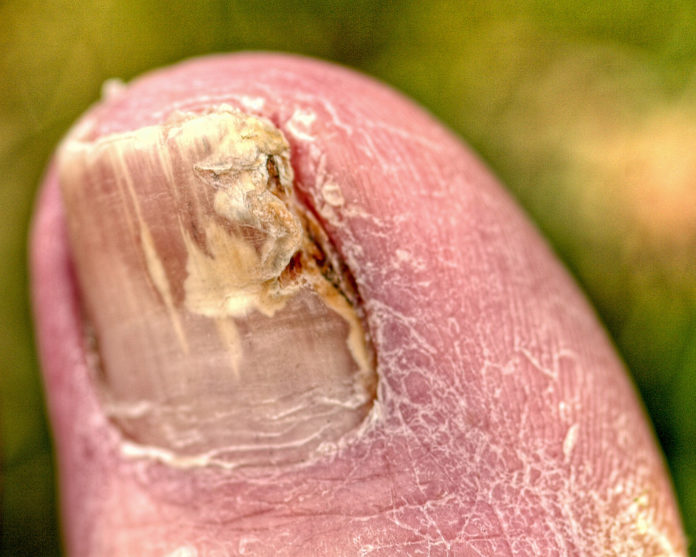Nail fungus infection is common and difficult to treat
Onychomycosis, a nail fungus that causes nail disfigurement, pain, and increased risk of soft tissue infection, impacts millions of people worldwide.
There are several topical antifungal treatments currently available; however, treatment failure remains high due to a number of factors like penetration. Nail infections are difficult to treat because nails receive blood supply only at the base. Medications are not retained across the nail plate and costs are high.
Adam Friedman, MD, professor of dermatology at the George Washington University School of Medicine and Health Sciences, and his team studied the potential use of nitric oxide-releasing nanoparticles to improve onychomycosis treatment.
Researchers investigated the use of nanotechnology to improve efinaconazole, a recently included wide coverage antifungal drug that boasts of highest cure rates among other topical antifungal drugs. They observed that when nitric oxide-releasing nanoparticles are combined with the efinaconazole, it achieves the same antifungal effects, but at a fraction of the amount of the medication alone needed to impart the same effect. The cost for a bottle of efinaconazole is more than $600, and full treatment calls for multiple bottles Use of nanotechnology could bring down costs dramatically.
“Nanotechnology is being studied and employed in many areas of medicine and surgery to better deliver established imaging and therapeutic agents to ultimately improve patient outcomes,” said Friedman.
“A quickly emerging roadblock in patient care is, unfortunately, access to medications due to rising cost and poor insurance coverage,” he added.
Nanoparticles and the medication, when combined, are more effective than either of the two alone
The nanoparticles and the medication, when combined are more effective than either of the two alone. This increases the possibility of better and more tolerable treatment regimens. An additional advantage is the ability of nanoparticles to access infections in difficult to reach locations and drug penetration levels and retaining activity across the nail plate.
“What we found was that we could impart the same antifungal activity at the highest concentrations tested of either alone by combining them at a fraction of these concentrations,” Friedman explained. “The impact of this combo, which we visualized using electron microscopy as compared to either product alone, highlighted their synergistic damaging effects at concentrations that would be completely safe to human cells.”
The study was published in the Journal of Drugs in Dermatology.



The home remedy you should all try is vinegar + Sodium bicarbonate.
But you have to be consistent – to let a “new” nail grow. So we talk about 4+ months.